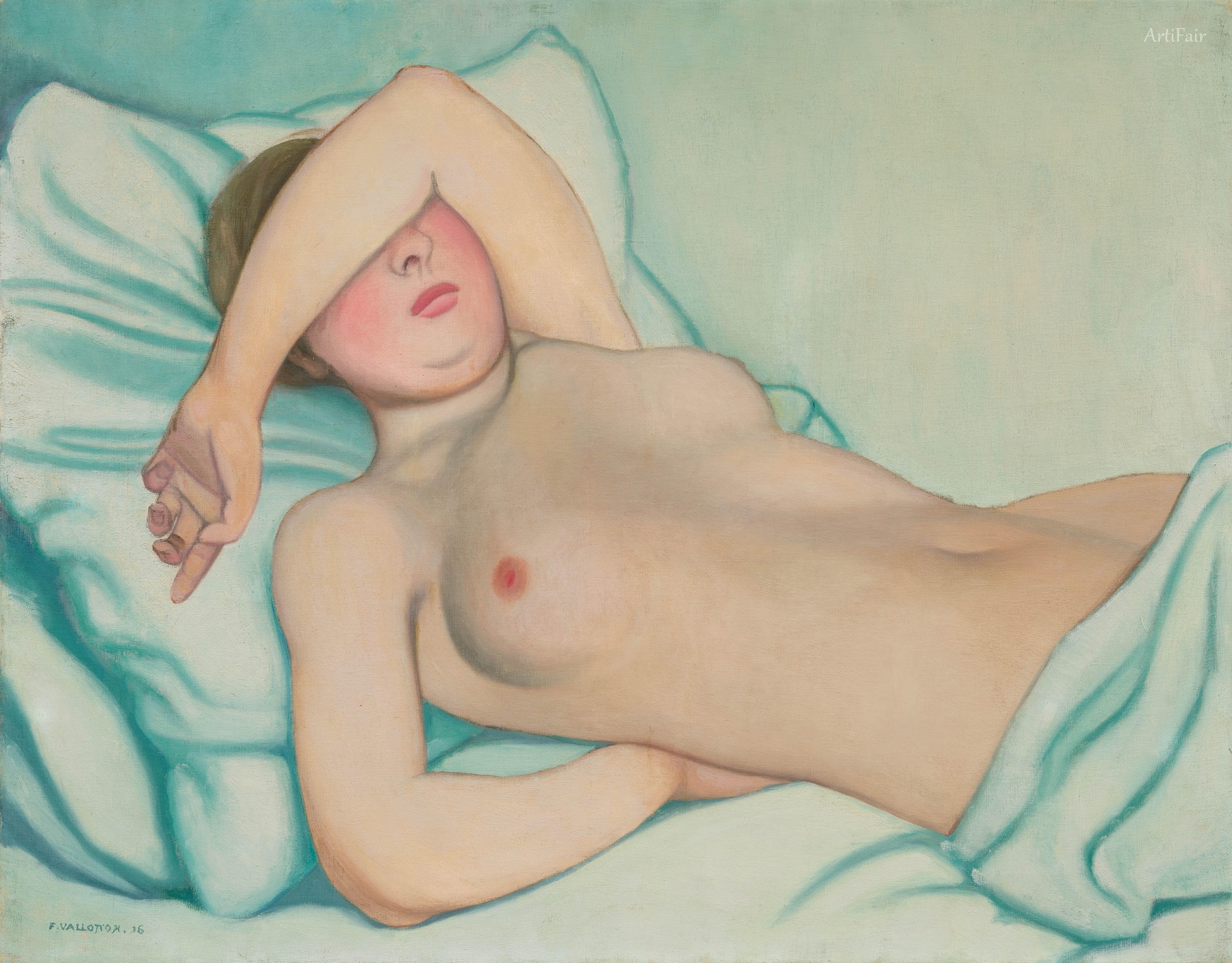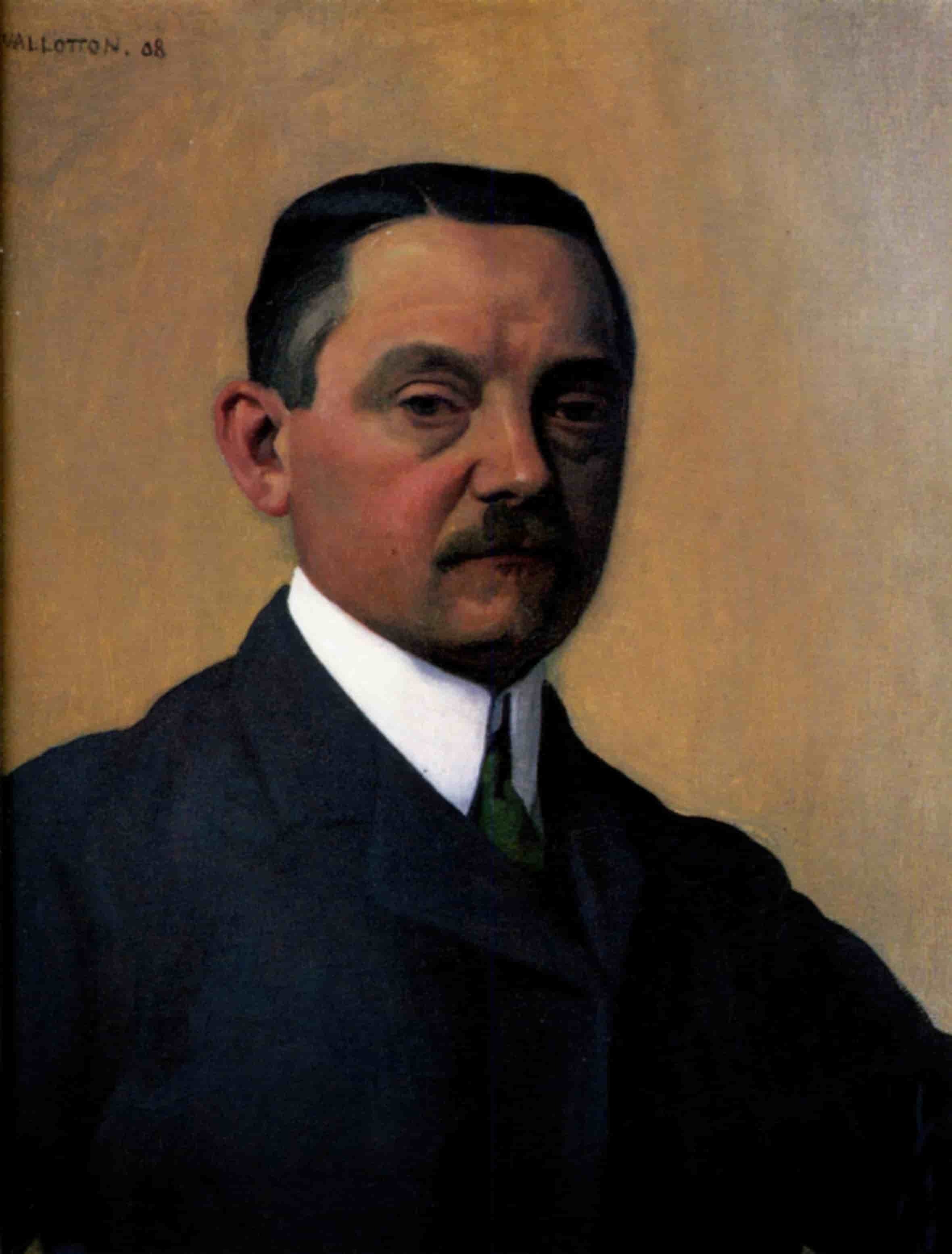

Félix Edouard Vallotton
FR
205
Artworks
1865 - 1925
Lifespan
Artist Biography
Félix Edouard Vallotton (1865–1925) was a Swiss and French painter and printmaker whose distinctive style left a unique mark on late 19th and early 20th-century art. Born in Lausanne, Switzerland, into a conservative middle-class Protestant family, Vallotton displayed early artistic inclinations. After graduating with a degree in classical studies in 1882, he moved to Paris to pursue art, enrolling at the Académie Julian. There, he studied under Jules Joseph Lefebvre and Gustave Boulanger, honing his technical skills. He was a diligent student, spending countless hours at the Louvre, deeply admiring Old Masters like Holbein and Dürer, as well as modern painters such as Ingres, Goya, and Manet. Ingres, in particular, remained a lifelong artistic touchstone for him. Despite initial financial struggles and his family's concerns, Vallotton was determined to make a living as an artist, a resolve supported by Lefebvre's belief in his talent.
Vallotton's early career was marked by a methodical approach; in 1885, he began his 'Livre de Raison', a meticulous catalogue of his works. His initial paintings, often portraits, showcased an Ingresque realism that sometimes drew criticism for its departure from academic tradition. The late 1880s were challenging, with financial difficulties and health issues. A pivotal moment came with his encounter with Japanese prints at the 1889 Paris Universal Exposition, which significantly influenced his subsequent work, especially his woodcuts. In 1891, he began seriously experimenting with xylography (woodcut), quickly mastering the medium. His portrait of Paul Verlaine marked his entry into this field. In 1892, he joined Les Nabis, a group of avant-garde artists including Pierre Bonnard, Édouard Vuillard, and Maurice Denis. Though associated with them and sharing their interest in Symbolism and simplified forms, Vallotton maintained a distinct artistic personality, earning him the nickname 'le Nabi étranger' (the foreign Nabi).
The 1890s saw Vallotton achieve international recognition primarily through his woodcuts. Characterized by stark contrasts of black and white, broad masses, and minimal detail, these prints often depicted street scenes, bathers, portraits, and critically, the series 'Intimités' (Intimacies, 1898). This series of ten interiors explored charged domestic encounters between men and women, revealing a sharp, sometimes cynical, observation of bourgeois life. His woodcuts were widely published in avant-garde journals like 'La Revue Blanche', solidifying his reputation. During this period, he was also active as an art critic and began writing. A significant life change occurred in 1899 with his marriage to Gabrielle Rodrigues-Hénriques, a wealthy widow whose family owned the prominent Bernheim-Jeune gallery. This union brought financial security and connections, leading Vallotton to gradually abandon printmaking after 1901 and concentrate on painting. He became a naturalized French citizen in 1900.
In his post-Nabi period, Vallotton focused on painting, producing highly finished portraits, nudes, still lifes, and landscapes often painted from memory ('paysages composés'). His painting style retained the clarity and hard edges of his woodcuts, rendered with an unemotional, realistic precision. While admired for their truthfulness and technical skill, his works were often criticized for their perceived coldness and severity. Critics noted an 'intolerable dryness' and a lack of 'joyfulness' in his colors. His subjects, particularly nudes, were depicted with a detached objectivity that eschewed conventional sensuality, drawing comparisons to the later New Objectivity movement in Germany and the work of Edward Hopper. He portrayed notable figures like Gertrude Stein, and his group portrait 'The Five Painters' (1902-03) captured his Nabi colleagues. He also continued his literary pursuits, writing plays and the novel 'La Vie meurtrière' (The Murderous Life), published posthumously.
The outbreak of World War I profoundly affected Vallotton. Rejected for military service due to his age, he expressed his patriotic sentiments and anti-war feelings through art. In 1915-16, he returned to woodcuts for the series 'C'est la guerre!' (This is War!), his final prints. In 1917, he was commissioned by the French government to tour the front lines, producing sketches that formed the basis for paintings depicting the war-ravaged landscapes with cool detachment, such as 'The Church of Souain in Silhouette'. After the war, Vallotton concentrated on still lifes, 'composite landscapes,' and increasingly flamboyant, erotic nudes. He battled persistent health problems in his later years, spending winters in Cagnes-sur-Mer and summers in Honfleur. Félix Vallotton died in Paris on December 29, 1925, a day after his 60th birthday, following cancer surgery.
Félix Vallotton left a legacy as a highly original artist who, while associated with Les Nabis, forged a unique path. He is considered a pivotal figure in the revival of the modern woodcut, influencing artists like Edvard Munch and Ernst Ludwig Kirchner with his bold graphic style and innovative techniques. His paintings, with their smooth surfaces, sharp outlines, and often unsettling psychological undertones, defied easy categorization, bridging Realism and Symbolism. His cool, detached observation, particularly in his 'Intimités' series and later nudes, offered a biting critique of bourgeois society and explored complex human relationships. While perhaps not achieving the widespread fame of some contemporaries during his lifetime, Vallotton's distinctive vision, his 'acerbic if not ironic humor,' and his ability to convey psychological disquiet have earned him lasting recognition as a significant and innovative artist of his era, whose work continues to resonate with its premonitions of modern anxieties and even surreal qualities.